A country in creative flux: highlights from Romanian Design Week 2016
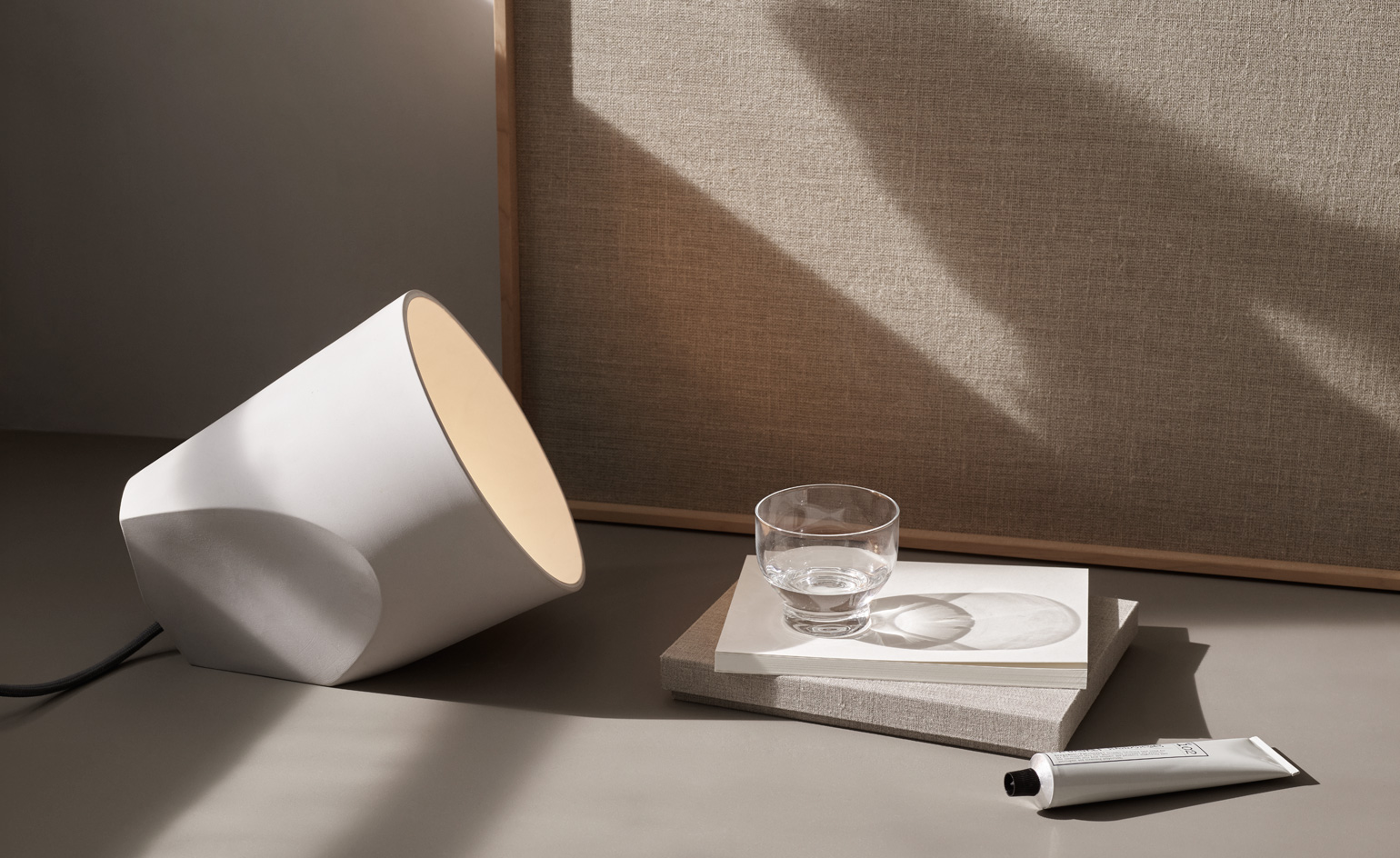
Bucharest may seem an unlikely destination for a design festival and yet, a seed of an idea planted by events organiser The Institute – pegged as ‘an ecosystem for creative industries in Romania’ – has been steadily growing since 2012. Now in its fourth year, Romanian Design Week (RDW) is seeking to solidify its place on the global design fair circuit. It has expanded its programme in scope and size, nearly doubling from 10 days to 17 for the latest edition.
A former market building that sat abandoned for years until now, Piața Amzei hosts the lion’s share of the action, bolstered by satellite events hosted across the city. The main exhibition features more than 200 works, all of them created within the last year by over 150 Romanian designers and architects. Each of the sections – which range from architecture to fashion to product and graphic design – has been overseen individually by a board of creative consultants and curators.
At the central exhibition, a handful of young designers demonstrated finesse that wouldn’t be amiss amongst more established brands at Salone del Mobile. Cristian Branea presented a slick, four-piece collection from his young brand Materia; recent UAIUM graduate Ana Barbu’s prototype sideboard was a sleek riff on the hatch; while Vlad Osiac’s reimagined chessboard caught our eye with its playful design. The exhibition’s architecture section was particularly strong – a slew of recent restaurant builds in Bucharest showed promise amongst local architects.
Elsewhere in the city, Point Gallery in collaboration with the Spanish Embassy hosts a showing of Spanish movie posters from the 50s, 60s and 70s. Maison V tempted with an exhibition of edible art objects, and concept store Cărtureşti Carusel – worth a visit alone for its local design wares and books – presented a selection of Romanian-designed chairs. The Unfinished Bucharest of Festival of Visual Arts also runs concurrently to RDW, with the World Press Photo 2016 exhibition as its flagship event.
In addition to its local offerings, RDW casts its gaze afar each year, honing in on the output of a guest country. For this edition, it proposed a Nordic focus, collating notable urban projects from Denmark, Finland, Iceland, Norway and Sweden. Finnish firm Studio Puisto shed light on its Dream Hotel project, and architects Dissing + Weitling shed light on Denmark’s Super Cycle Highway, for example. Most importantly, it provided a rare chance for local designers to gain invaluable insight into successful initiatives from other European countries.
Romania is a country still in flux, politically, economically and creatively. A visit to the People’s House – a monumental administrative building second only in size to The Pentagon – only pinpoints the challenges faced by creative industries to gain traction on even a local level. An estimated €3 billion – a veritable king's ransom in Eastern Europe – was used to fund the project and entire neighbourhoods were razed to make way for it.
Today, it sits virtually empty save for a handful of art museums and the Romanian parliament that occupy less than 30% of its gargantuan 365,000 sq m floor space. Its heating and maintenance bills run in the millions annually. The local design community struggles to court funding, while vanity architectural projects siphon what little there is. But there’s certainly an air of optimism to be found as the country (alongside Greece) will host the European Capital of Culture in 2021, with Bucharest amongst the cities in the running. Only time will tell if the Romania is able to use this momentum to affirm its merit on the international design stage.

Multidisciplinary studio Hippos Design presented Fangai, an interactive light and sound installation. It comprises a series of pentagonal light fixtures with motion sensors – or ’mushrooms’ – that are triggered by visitors moving throughout the space. The soundscape is designed as an augmented interpretation of how the mushrooms’ gills would sound if it were possible to be perceived by the human ear
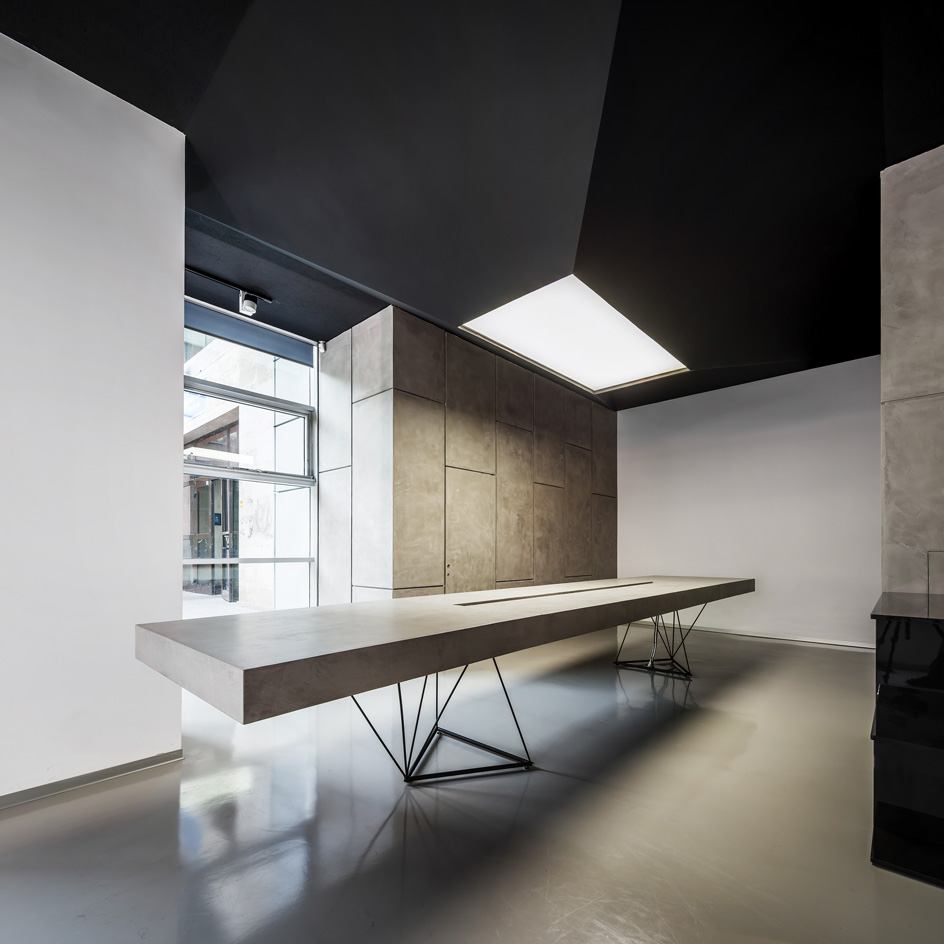
The architecture section of the festival’s main exhibition cast the spotlight on Romanian developments built within the last year, including this Bucharest showroom by Manadelucru Design Office for Vienna-based steel supplier Alukönigstahl

The cantilevered design that shapes this single family dwelling by Exhibit Arhitectura in the city of Brașov resolves the client’s desire for privacy from the main street, while still allowing plenty of natural light in
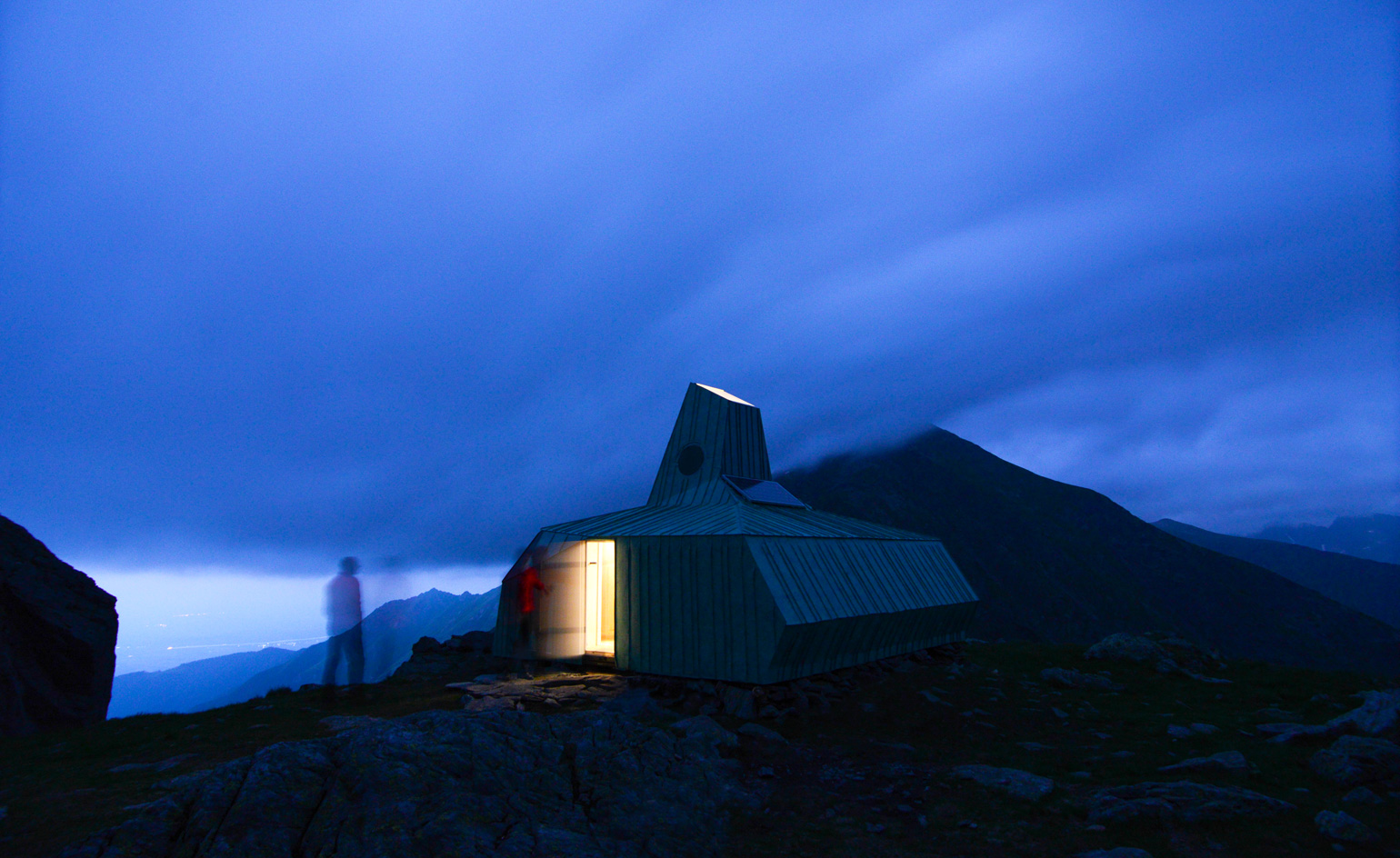
Romanian architect Marius Miclăuş accepted the challenge to design a mountainside refuge within a restricted budget. He opted to use CLT for the structure’s exterior, for its resistance to the harsh light reflected by the surrounding snow, as well as to the strong winds

’Alecu’ armchair, by Ciprian Andrei, founder of Romanian design studio Atelier Mustață
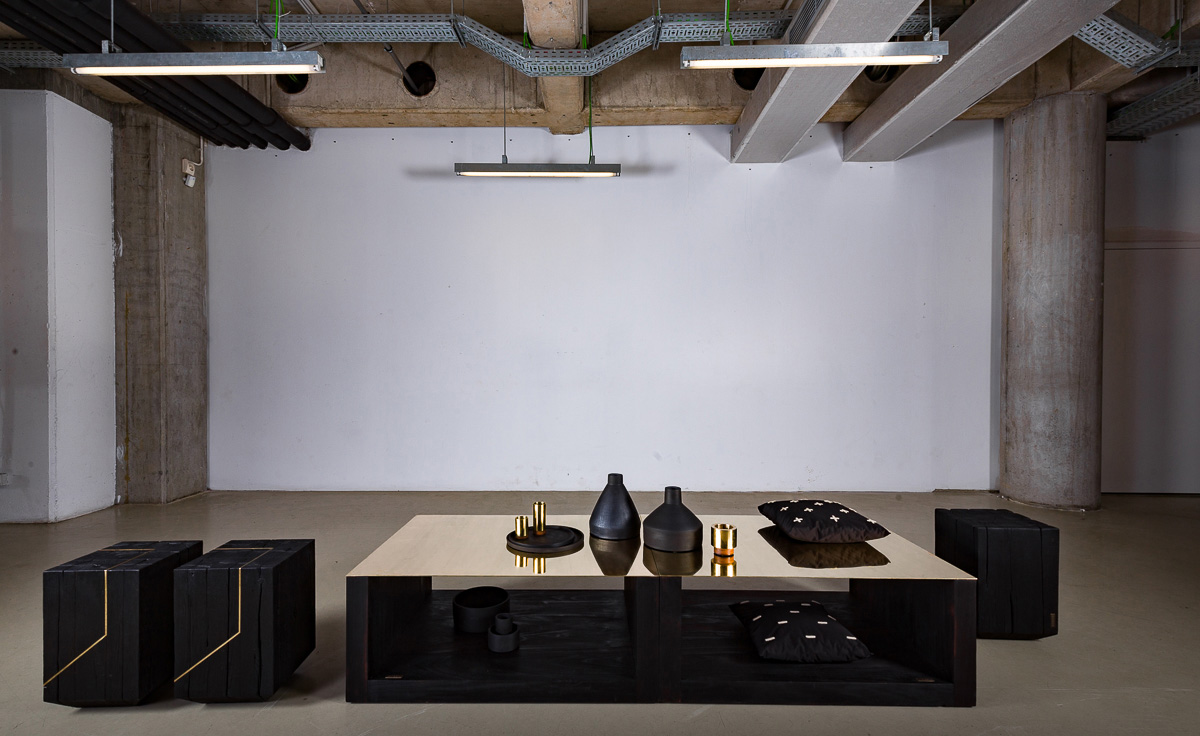
Cristian Branea founded Bucharest-based design and manufacturing company Materia less than two years ago. The fledgling brand offered a small but neatly formed collection comprising four pieces, including the ’Malthen’ coffee table and ’Faug’ stools...

...as well as two tables, ’Alkar’ (pictured) and ’Orwadh’

’The Woodphones’ is a joint venture between Prototip Studio and Acoustic Density who have created a stylish audio system using birch wood and copper
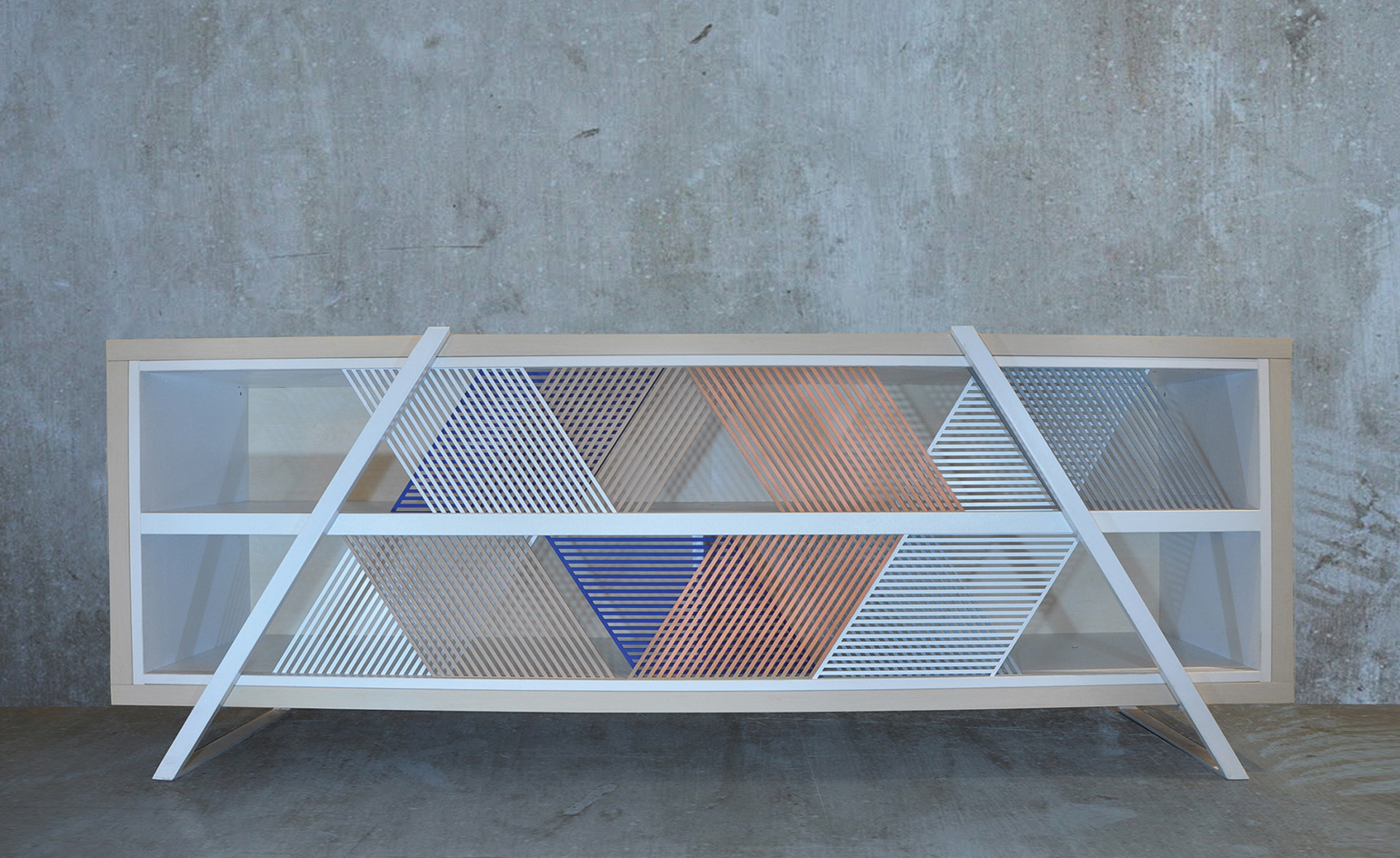
Young designer Ana Barbu’s prototype ’C#’ sideboard’s inspiration is the hatch. She explains, ’The concept was meant to create a diverse range of geometric shapes, cubes, triangles and hexagons, but at the same be a graphical mash-up of hatches’
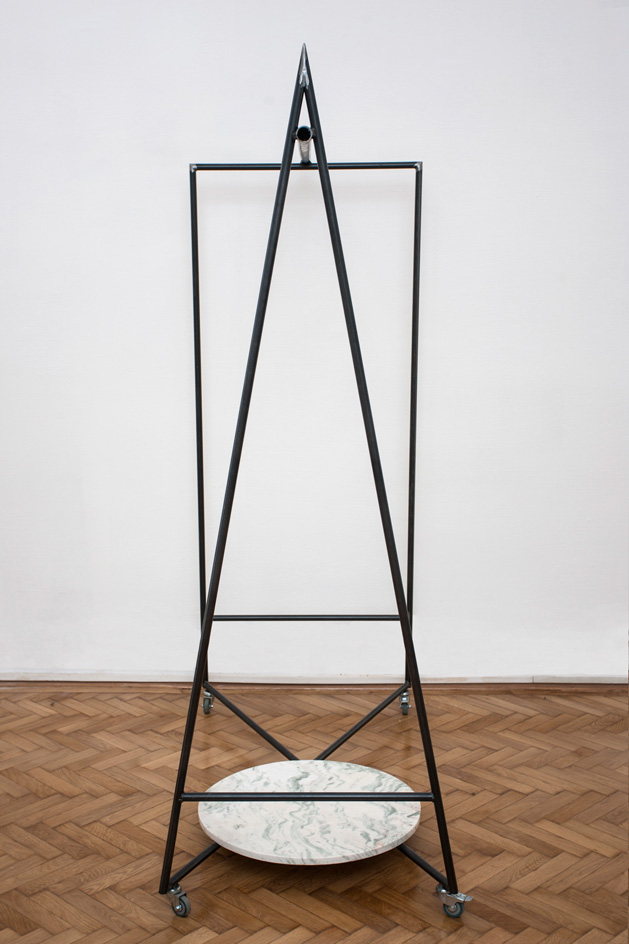
Radu Abraham originally designed his ’Geometry’ clothing rack for fashion designer Oana Lupas’ showroom. The starting point for this design was the three basic shapes in geometry – circle, square and triangle
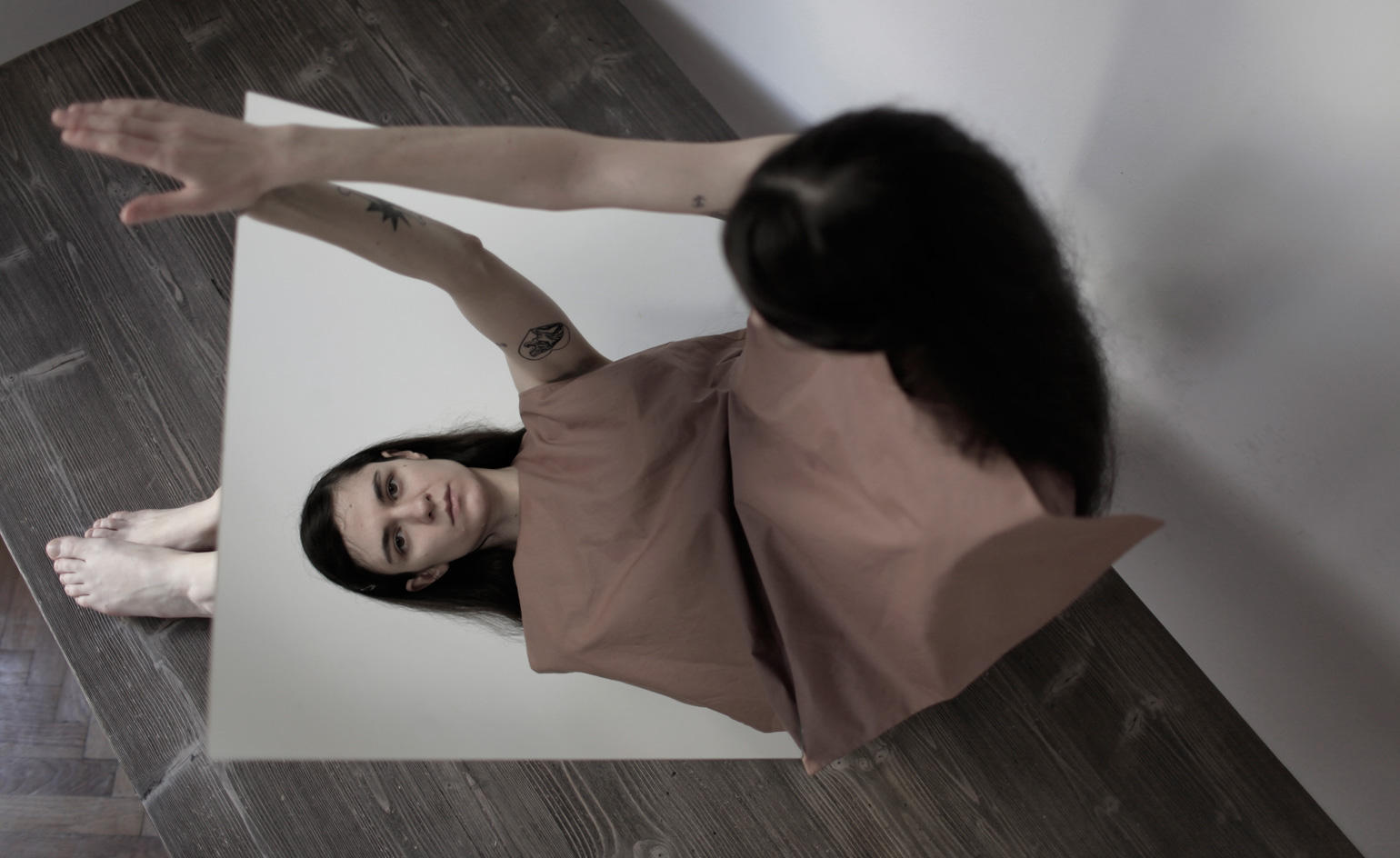
Ana Alexe’s androgynous spring/summer 2016 collection, entitled ’The Peacock Car’, stood out amongst the local fashion designers exhibited at Romanian Design Week
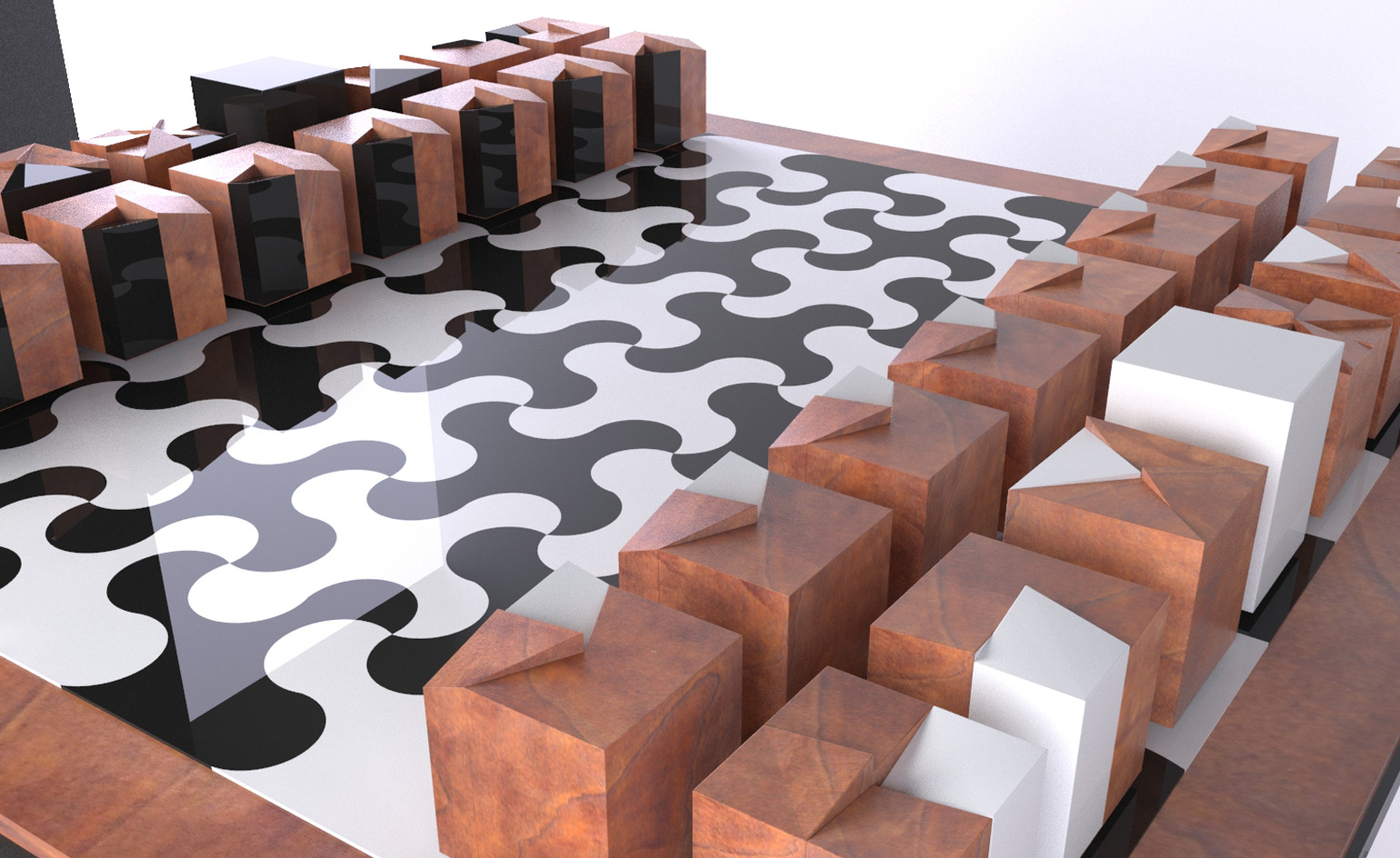
Bucharest-based designer Vlad Osiac’s project reimagines the traditional chess board, with a battlefield that begins to merge in the centre. The design for the chess piece also reflects the rules of movement for each piece
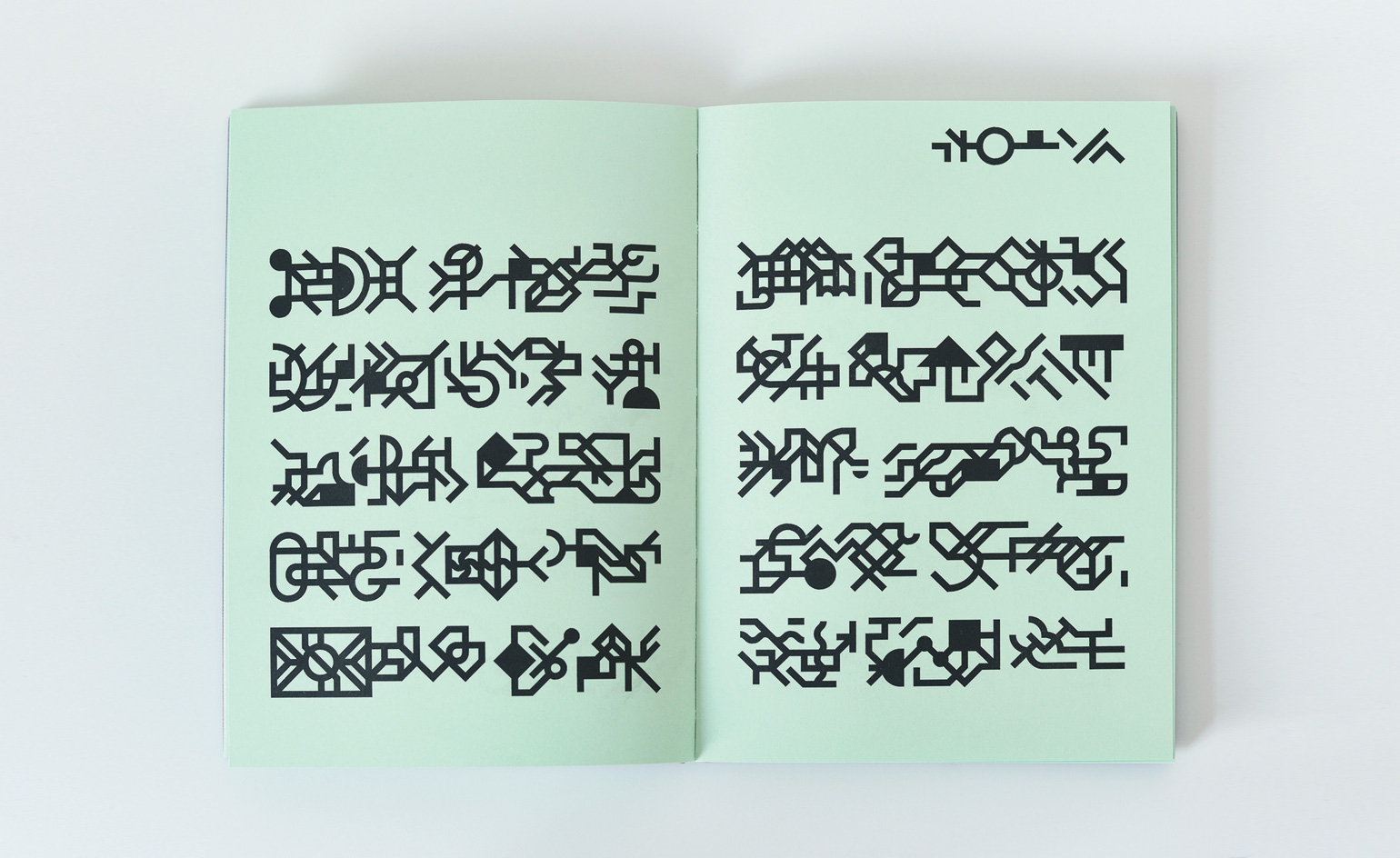
Elsewhere in the main exhibition, graphic designer/art director Paul Dersidan published a book of geometric hieroglyphs, entitled Exit

Type is Sexy, by graphic designer Bianca Dumitrascu
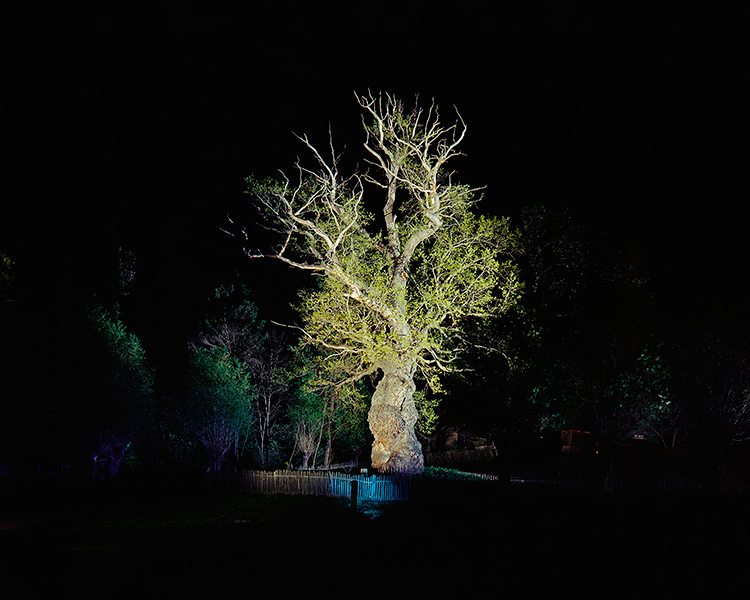
Bucharest photographer Florin Ghenade showed works from his ’Old Trees’ series...
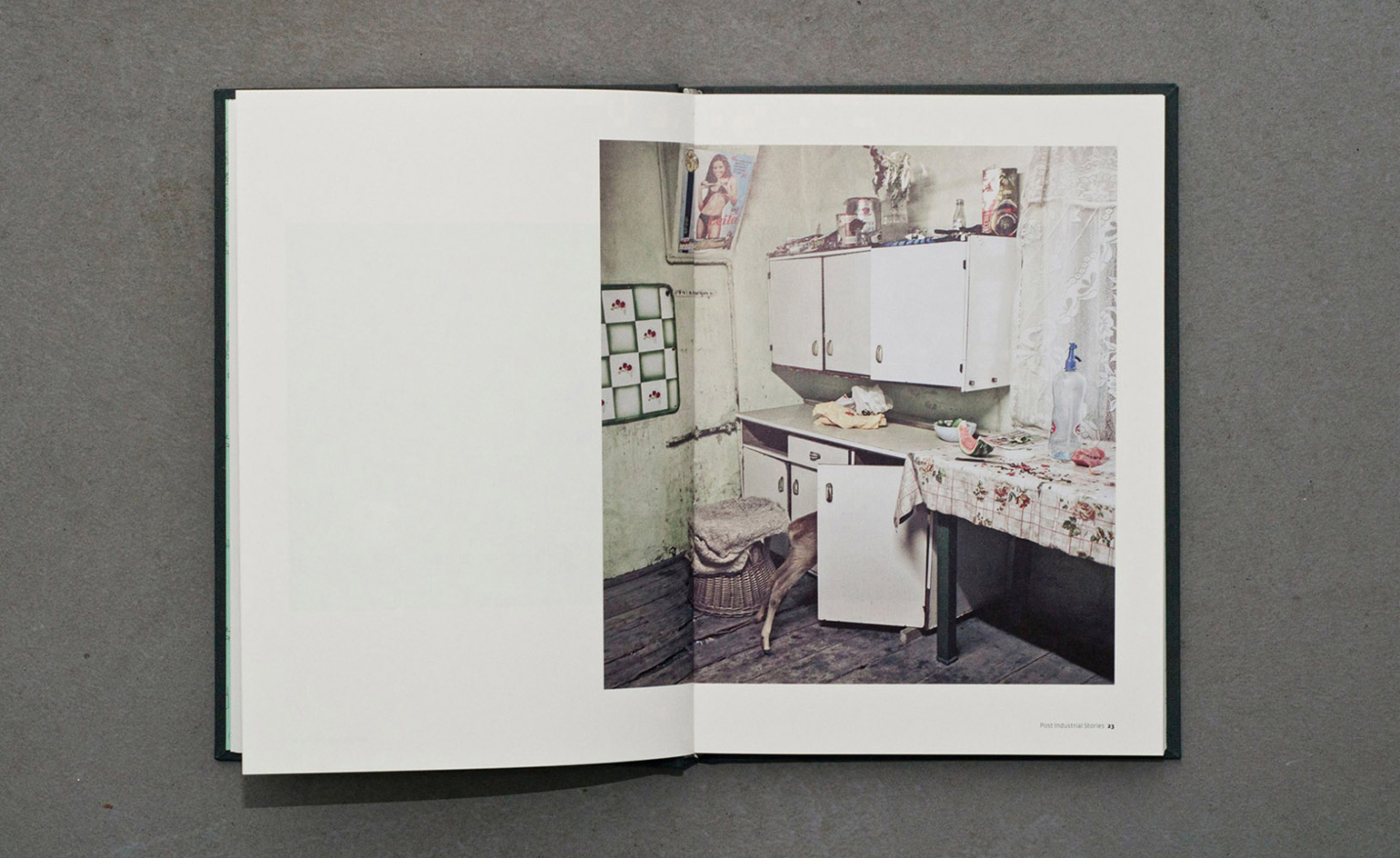
...while Ioana Cîrlig and Marin Raica caught our eye with their haunting photobook, Post-Industrial Stories, exploring Romania’s ’mono-industrial communities’
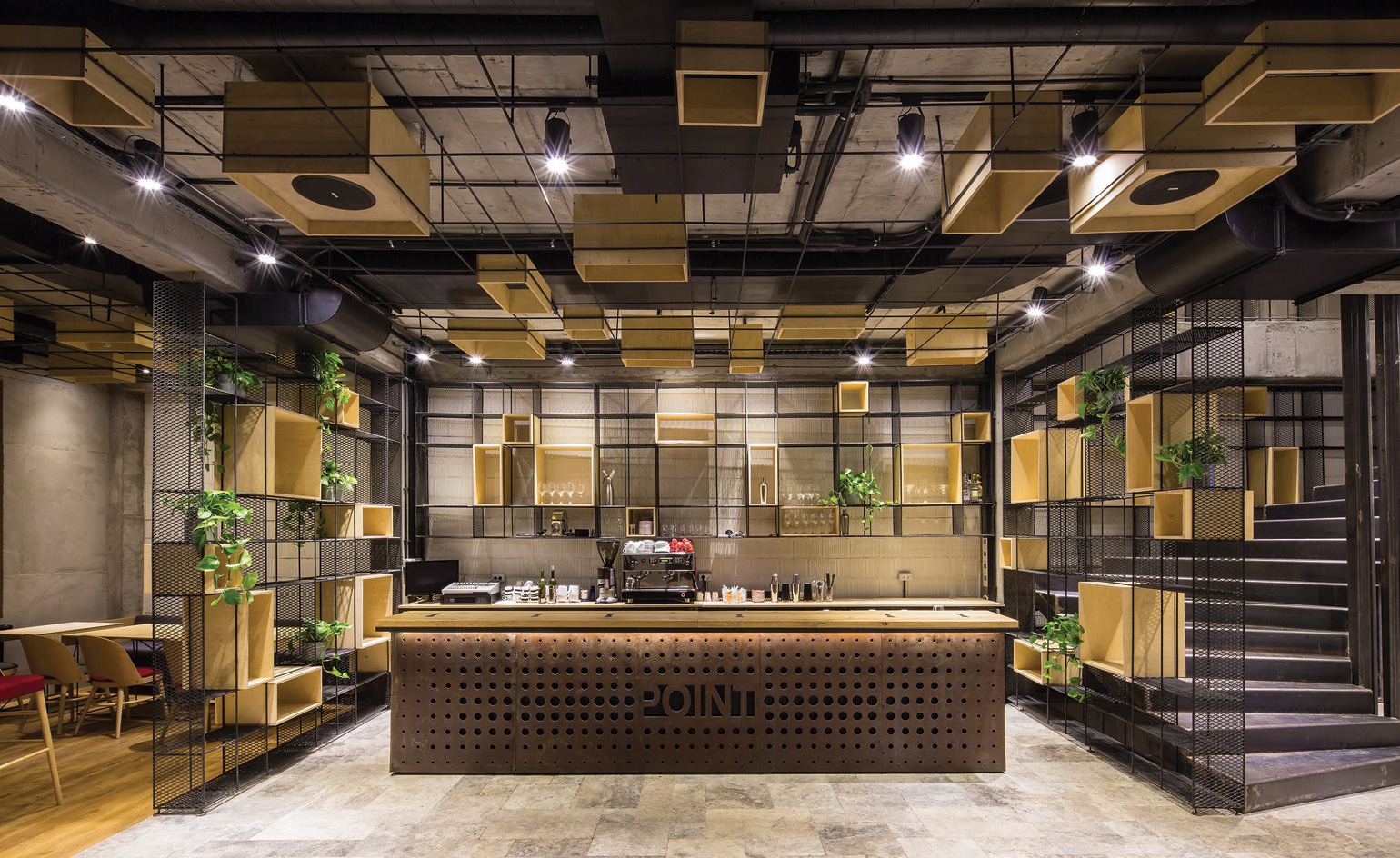
Bucharest’s hospitality and entertainment scene proved to be transforming slowly but surely, with a recent slew of design-led venues cropping up across the city. Pictured: Point Independent Theatre, by Lama Arhitectura
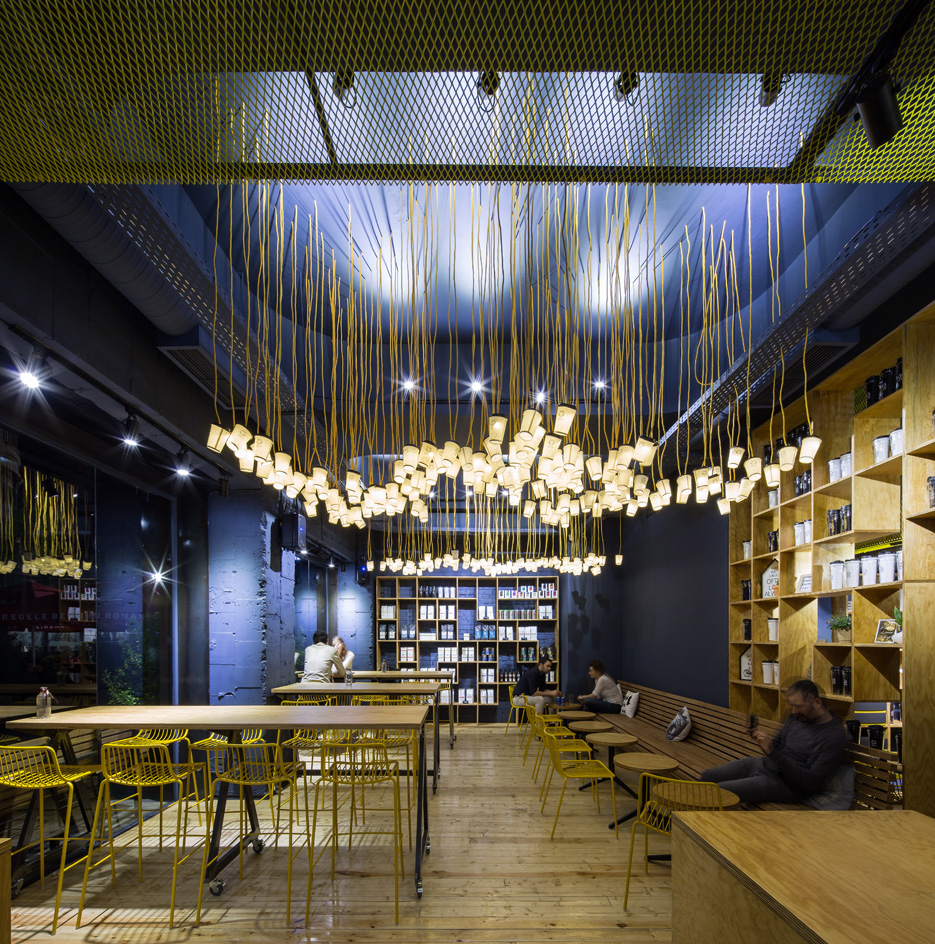
Lama Arhitectura also oversaw the refurbishment of Ted’s Coffee Co four shops, including this outpost in University Square
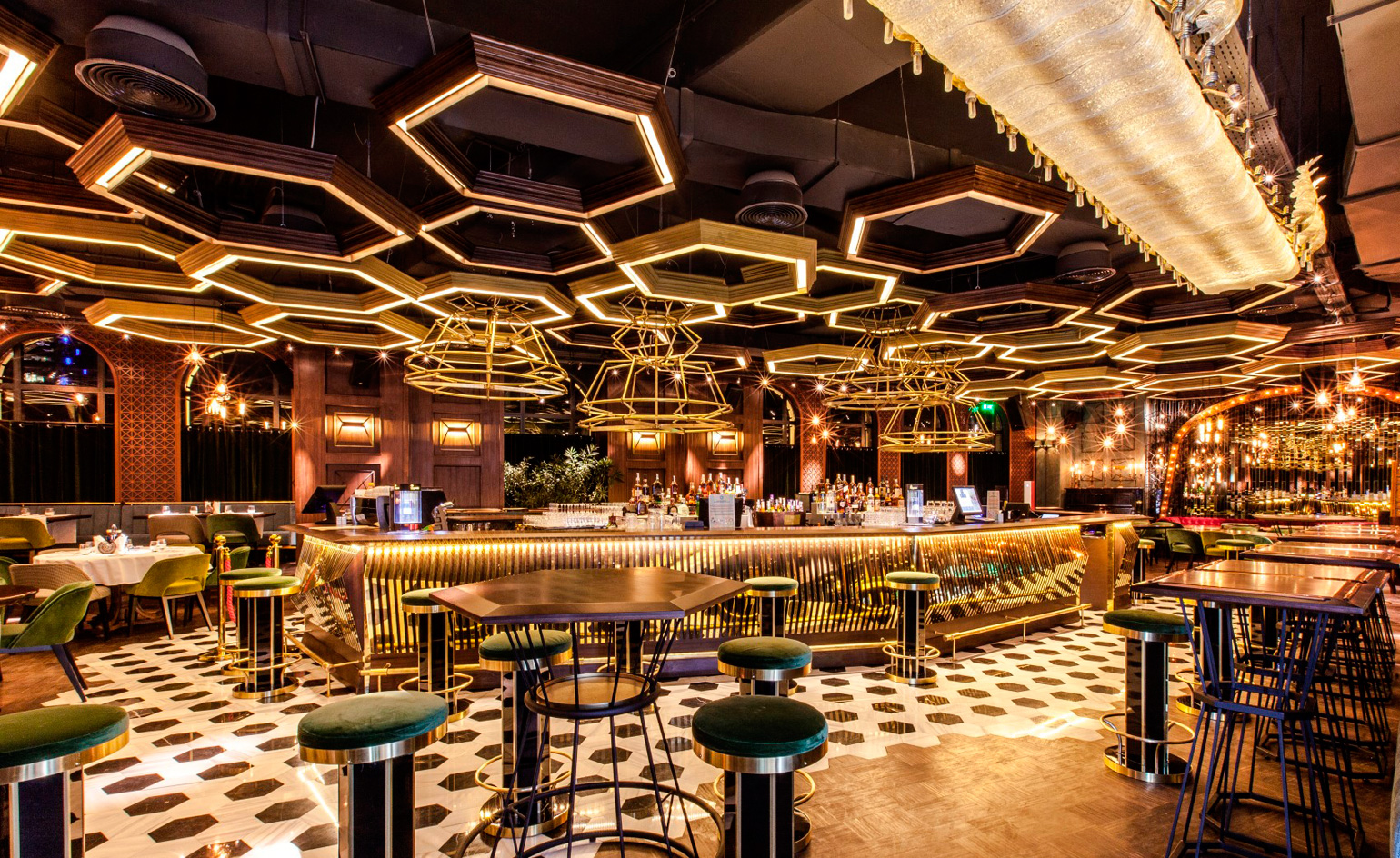
Architect and restaurant entrepreuner Mihai Popsecu is both owner and designer of a host of sleek Bucharest hotspots. It’s near-impossible to get a seat on any given night at his fusion restaurant/bar Uanderful
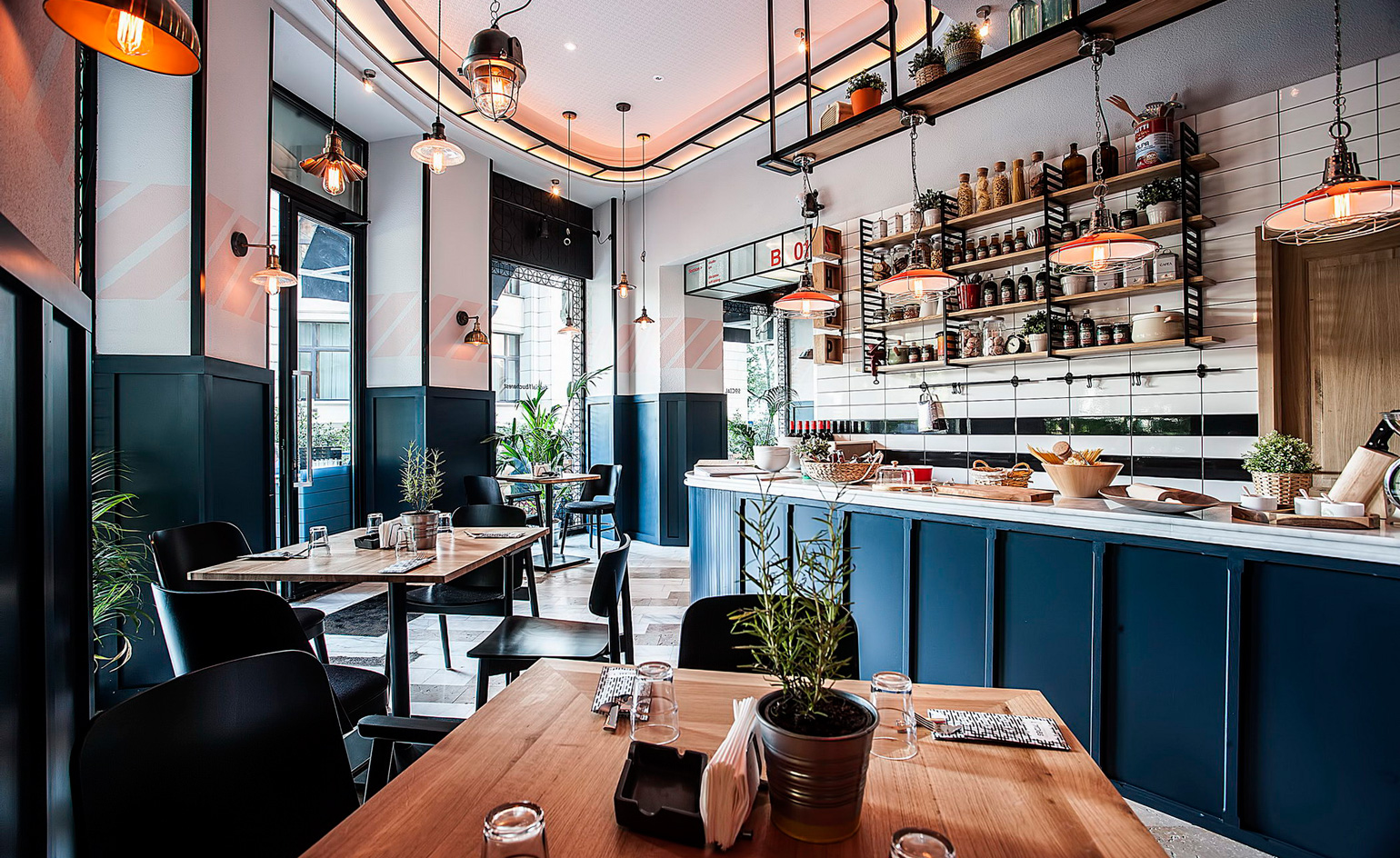
Social 1 by design duo PickTwo finds itself inside a classic Socialist-style building that was designed and completed during the communist regime of Nicolae Ceaușescu. The team looked for a modern design that also harked back to the site’s historical roots
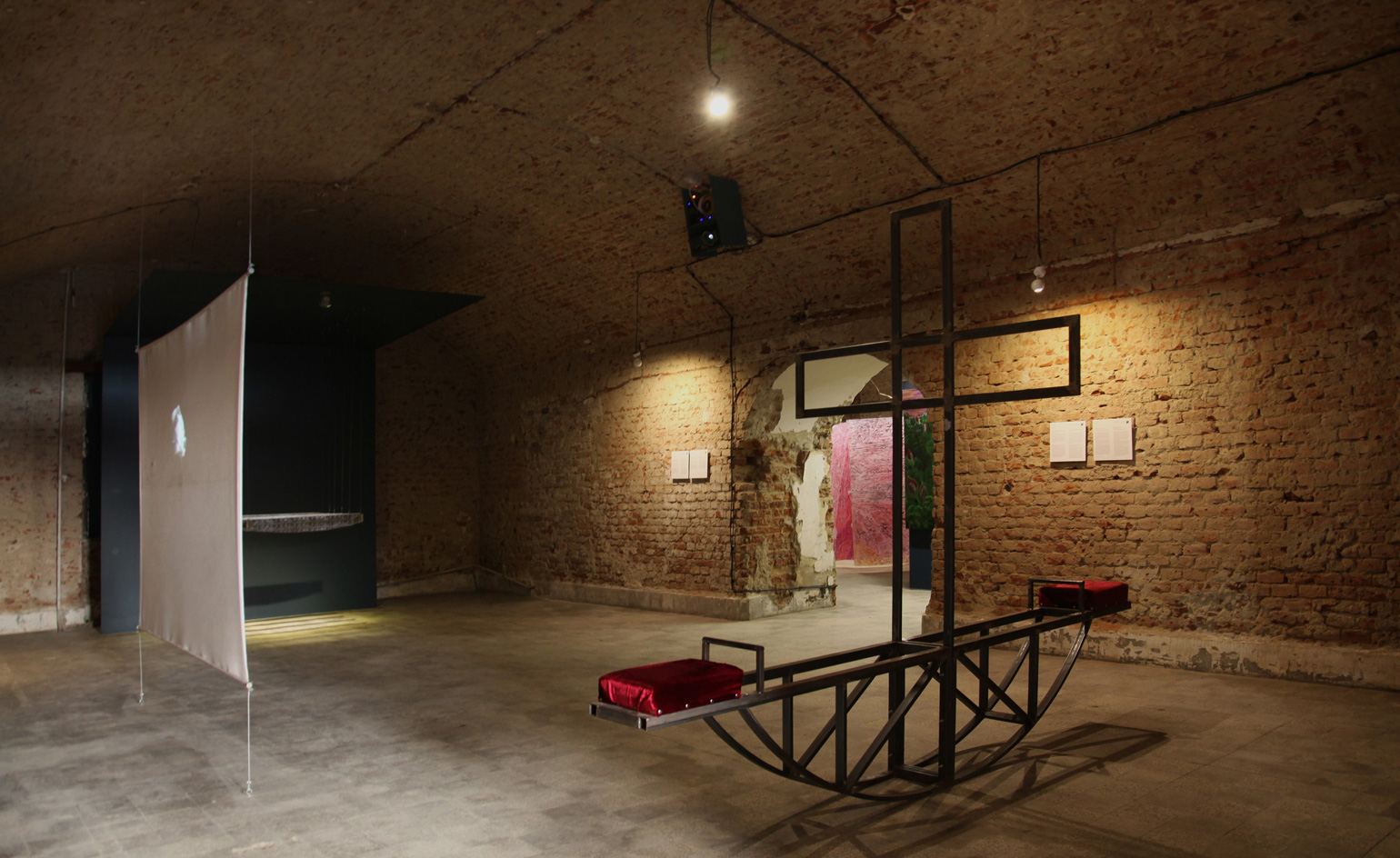
A view inside the surreally-name Rabbits In An Alcove exhibition space, designed by young architecture studio PandaPanda

’Urban Bicycle’, by Andrei Sandu
INFORMATION
Romanian Design Week runs from 21 May until 5 June. For more information, visit The Institute's website
Receive our daily digest of inspiration, escapism and design stories from around the world direct to your inbox.
-
 Eclectic and colourful, Charlie Ferrer’s home reflects the interior designer’s personal and professional evolution
Eclectic and colourful, Charlie Ferrer’s home reflects the interior designer’s personal and professional evolutionThe New York interior designer invites us into his new Greenwich Village home: come on in
-
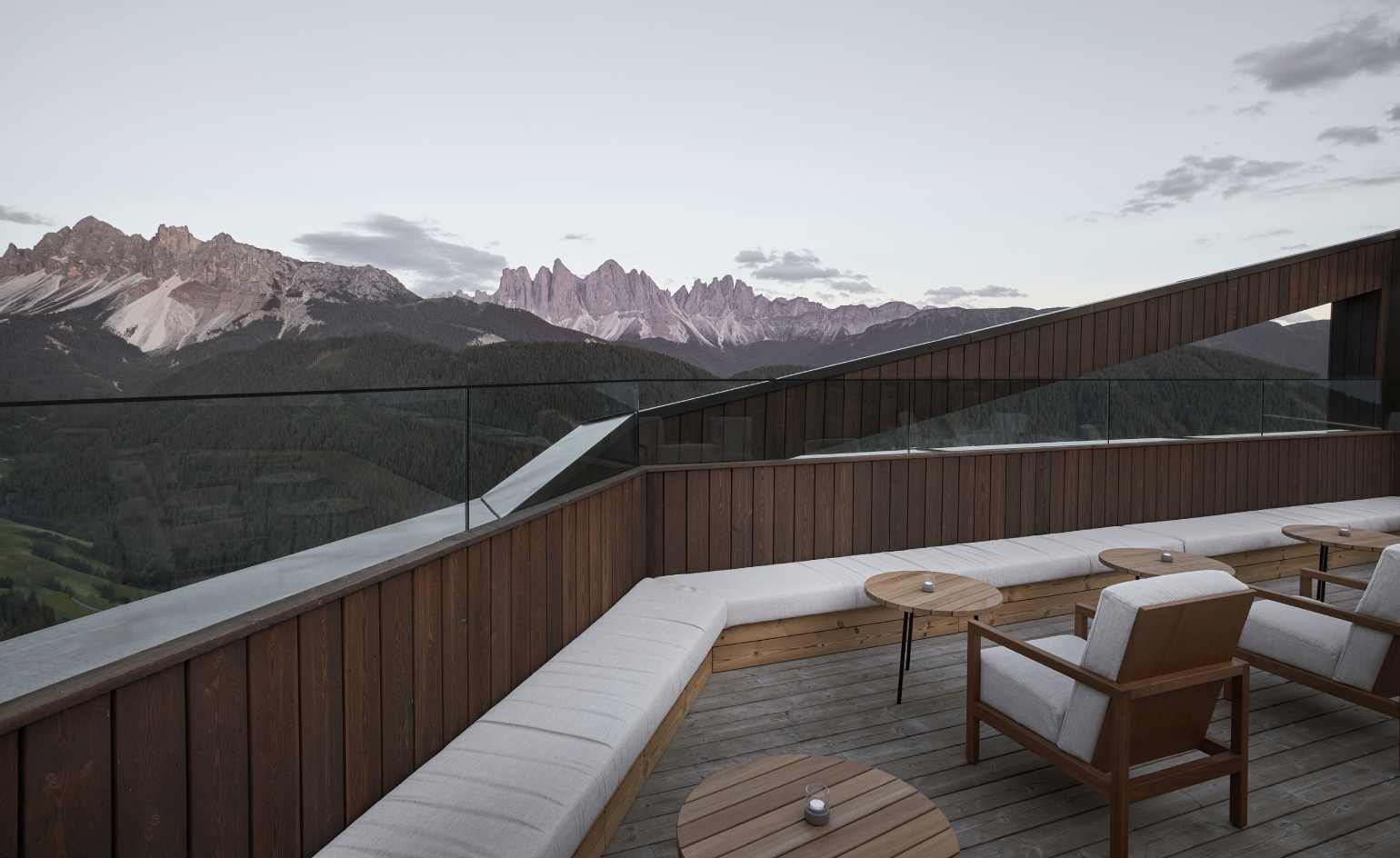 Heading to the 2026 Winter Olympic Games? Don’t miss these stops along the way
Heading to the 2026 Winter Olympic Games? Don’t miss these stops along the wayAs the anticipated winter games draw near, Wallpaper*’s Milan editor, Laura May Todd, shares where to stay, eat, drink and relax in the Dolomites
-
 Step inside this resilient, river-facing cabin for a life with ‘less stuff’
Step inside this resilient, river-facing cabin for a life with ‘less stuff’A tough little cabin designed by architects Wittman Estes, with a big view of the Pacific Northwest's Wenatchee River, is the perfect cosy retreat
-
 Eastern promises: highlights from Taipei’s reign as World Design Capital 2016
Eastern promises: highlights from Taipei’s reign as World Design Capital 2016 -
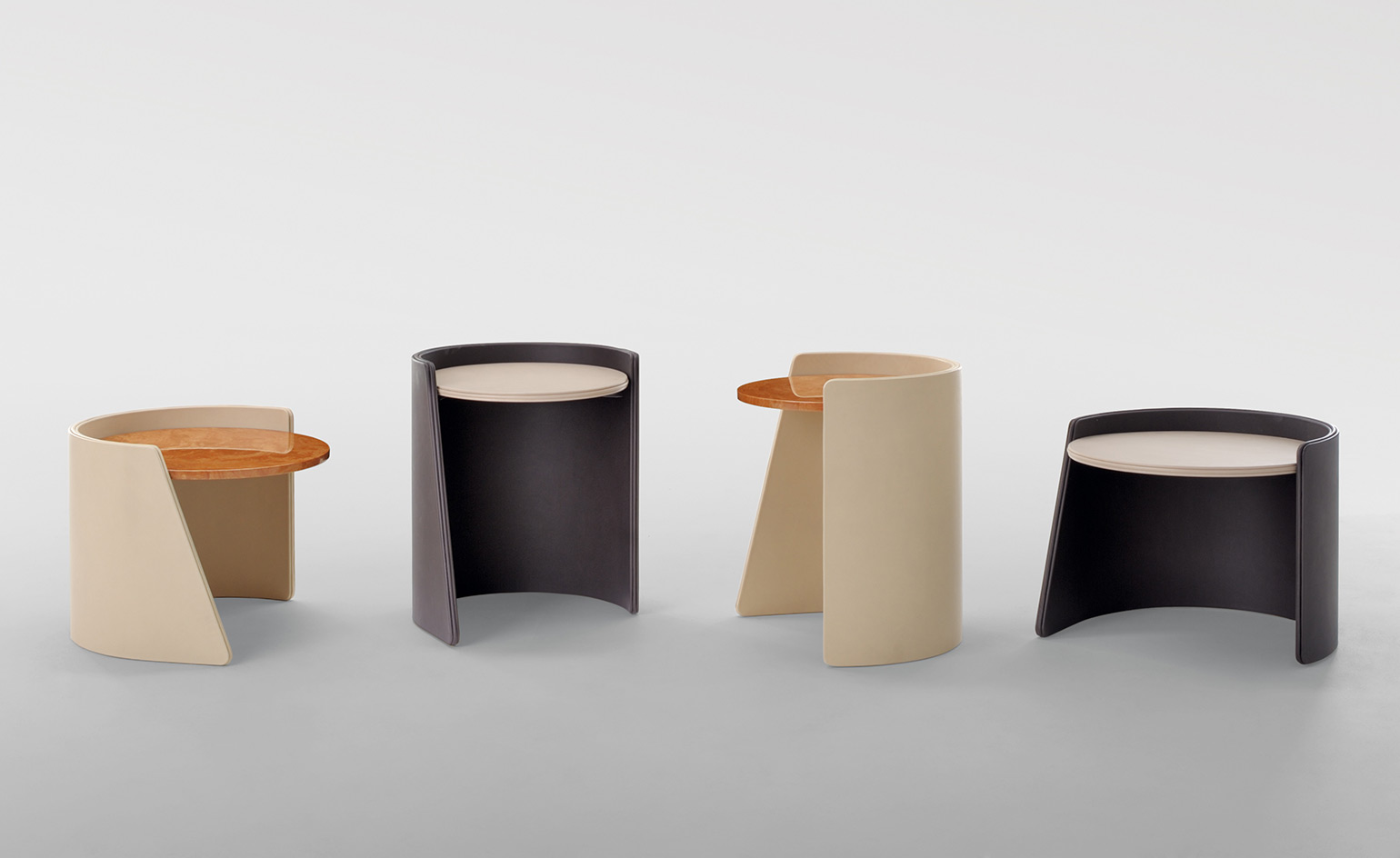 Stepping up: Middle Eastern designers emerge as a united force in Dubai
Stepping up: Middle Eastern designers emerge as a united force in Dubai -
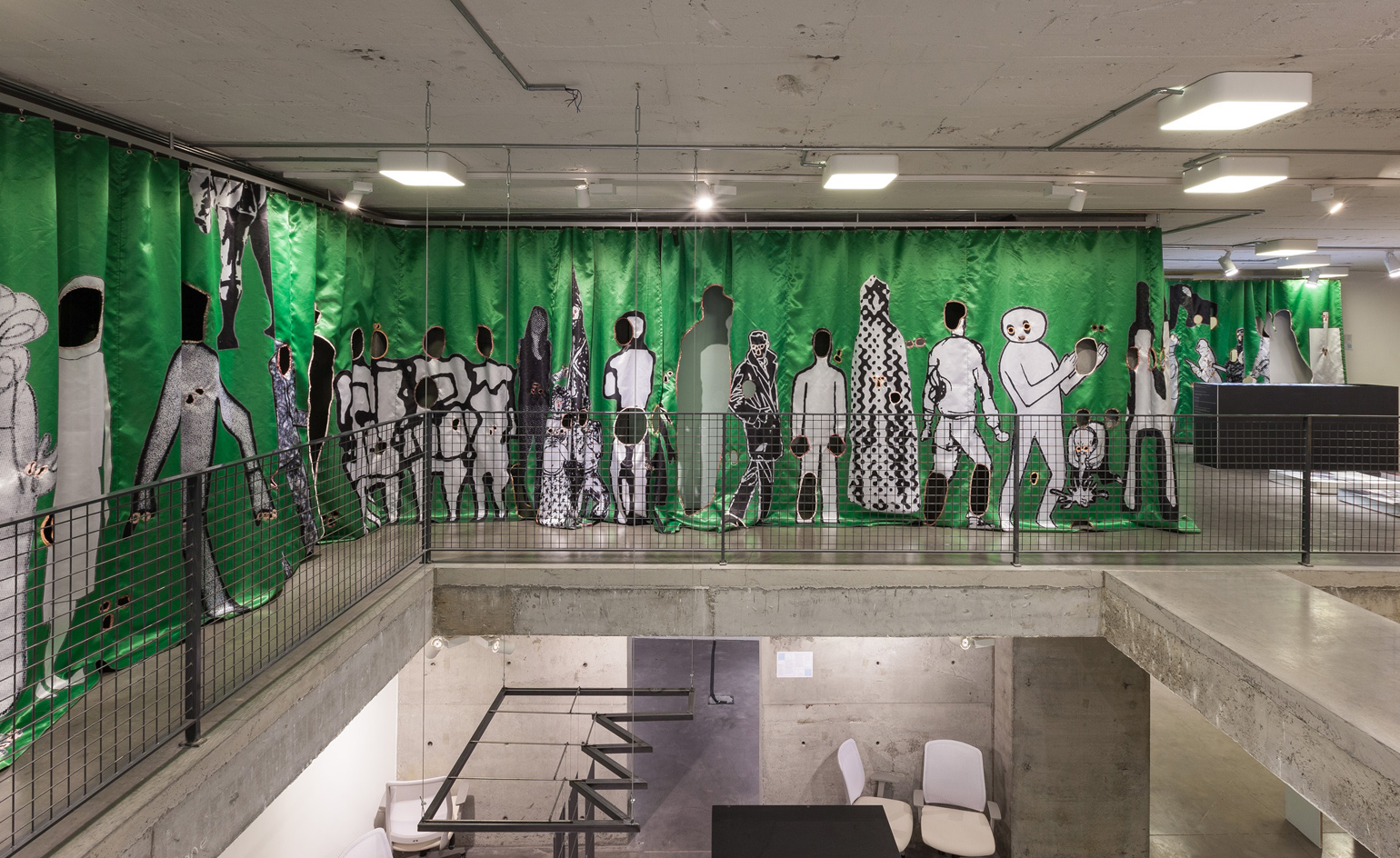 Istanbul’s third Design Biennial explores the human imprint
Istanbul’s third Design Biennial explores the human imprint -
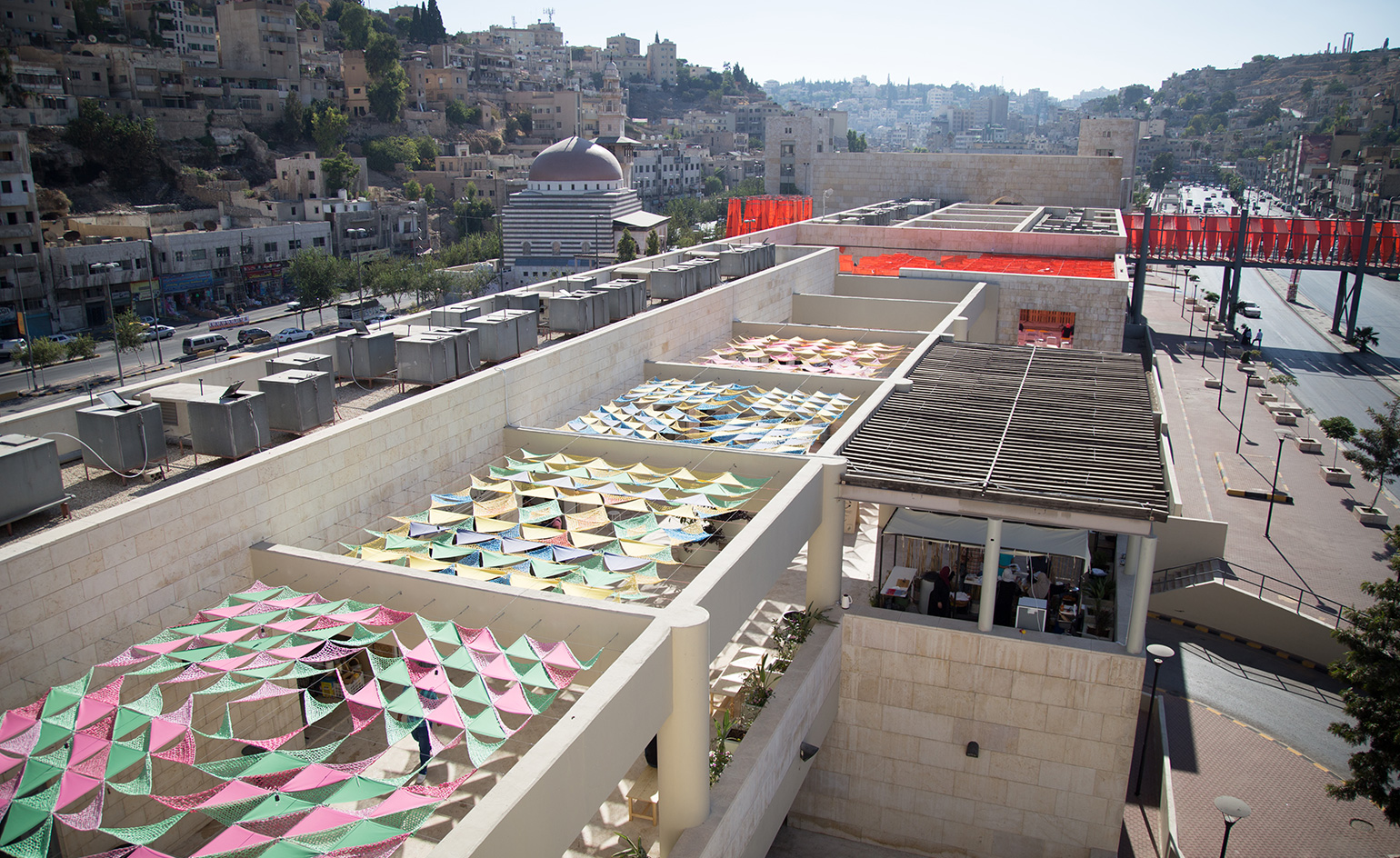 Breaking borders: the inaugural Amman Design Week celebrates design across the Middle East
Breaking borders: the inaugural Amman Design Week celebrates design across the Middle East -
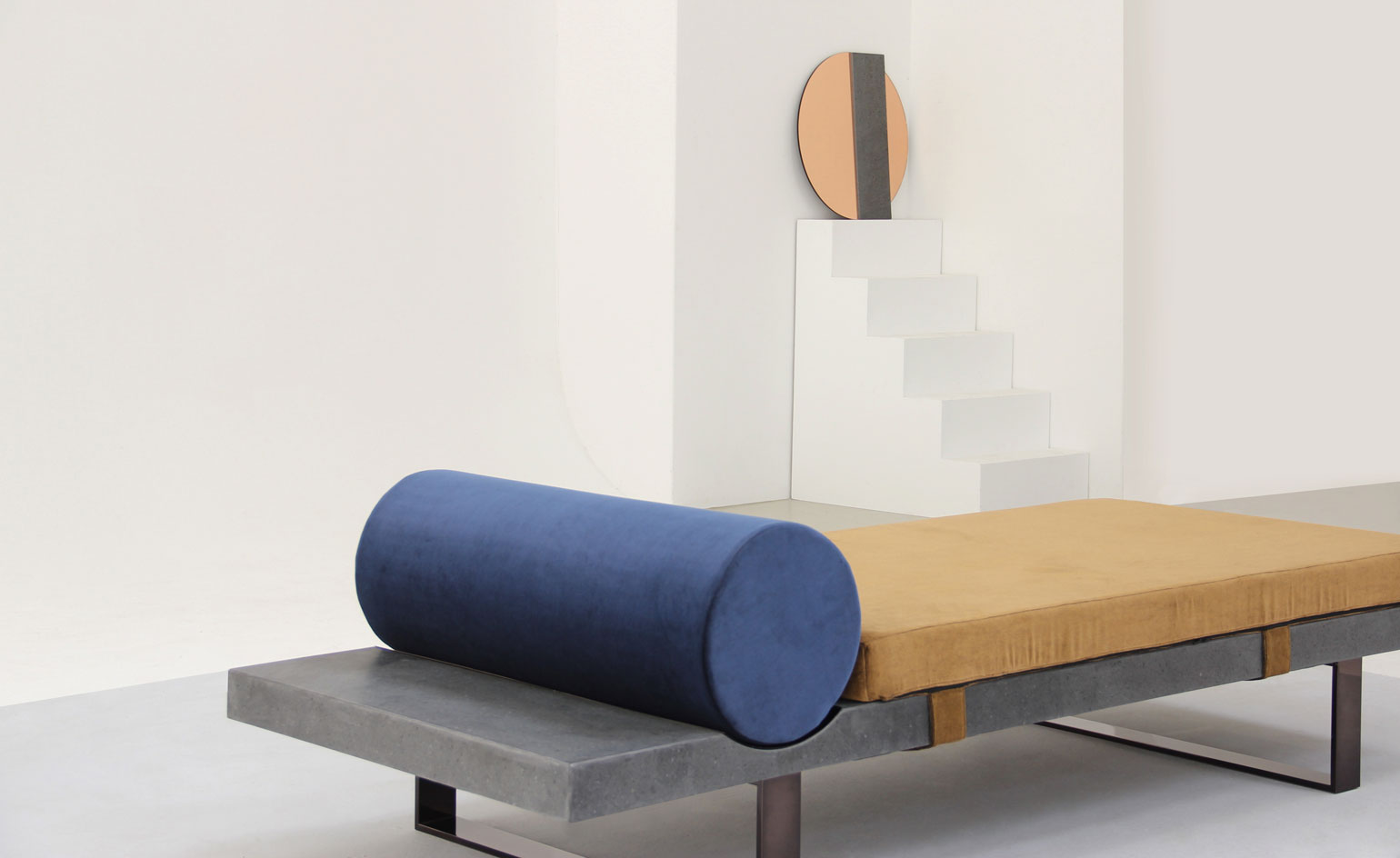 Global digest: all the highlights from the September edition of Maison et Objet
Global digest: all the highlights from the September edition of Maison et Objet -
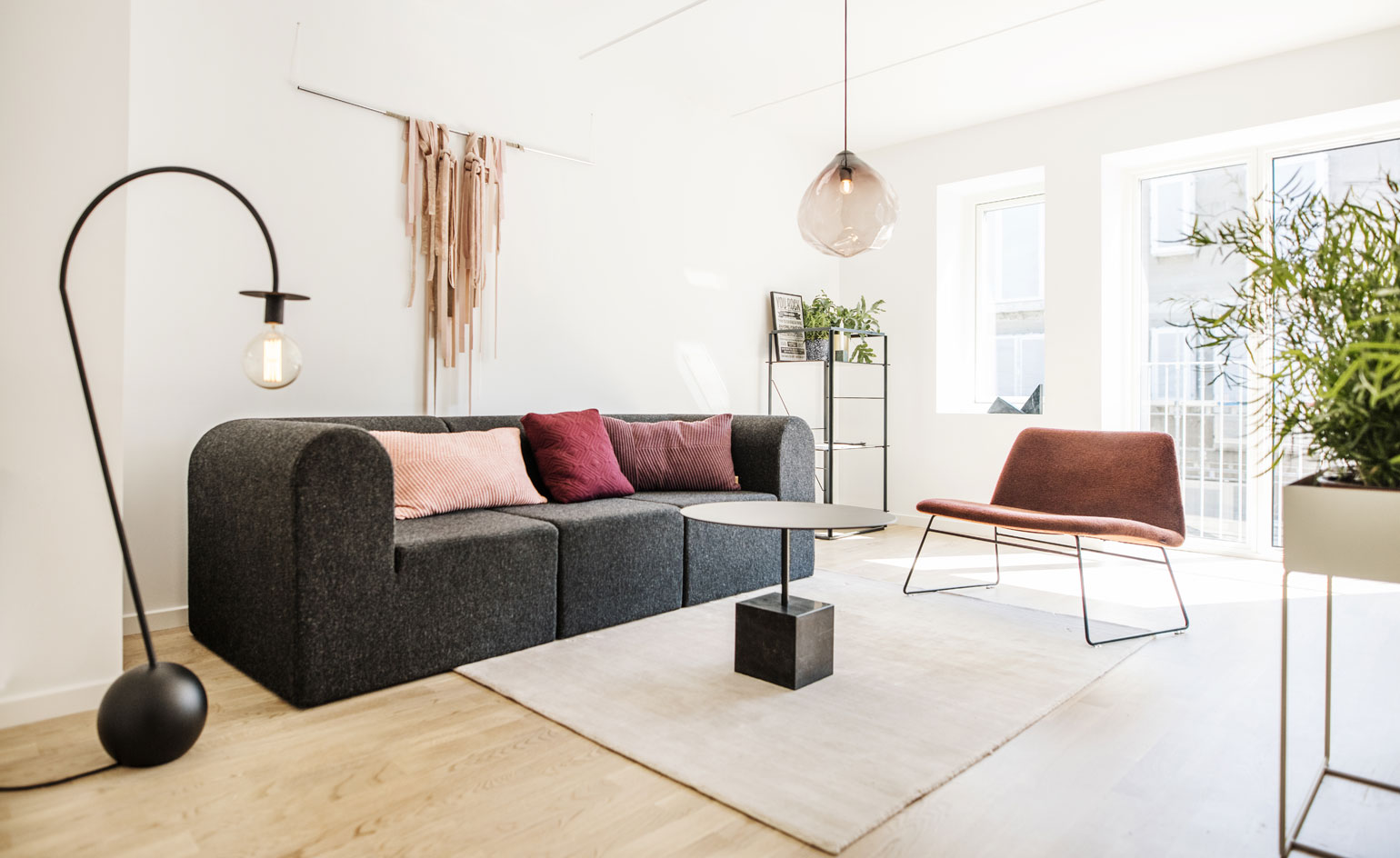 Wallpaper* surveys new talents and transformations at Northmodern 2016
Wallpaper* surveys new talents and transformations at Northmodern 2016 -
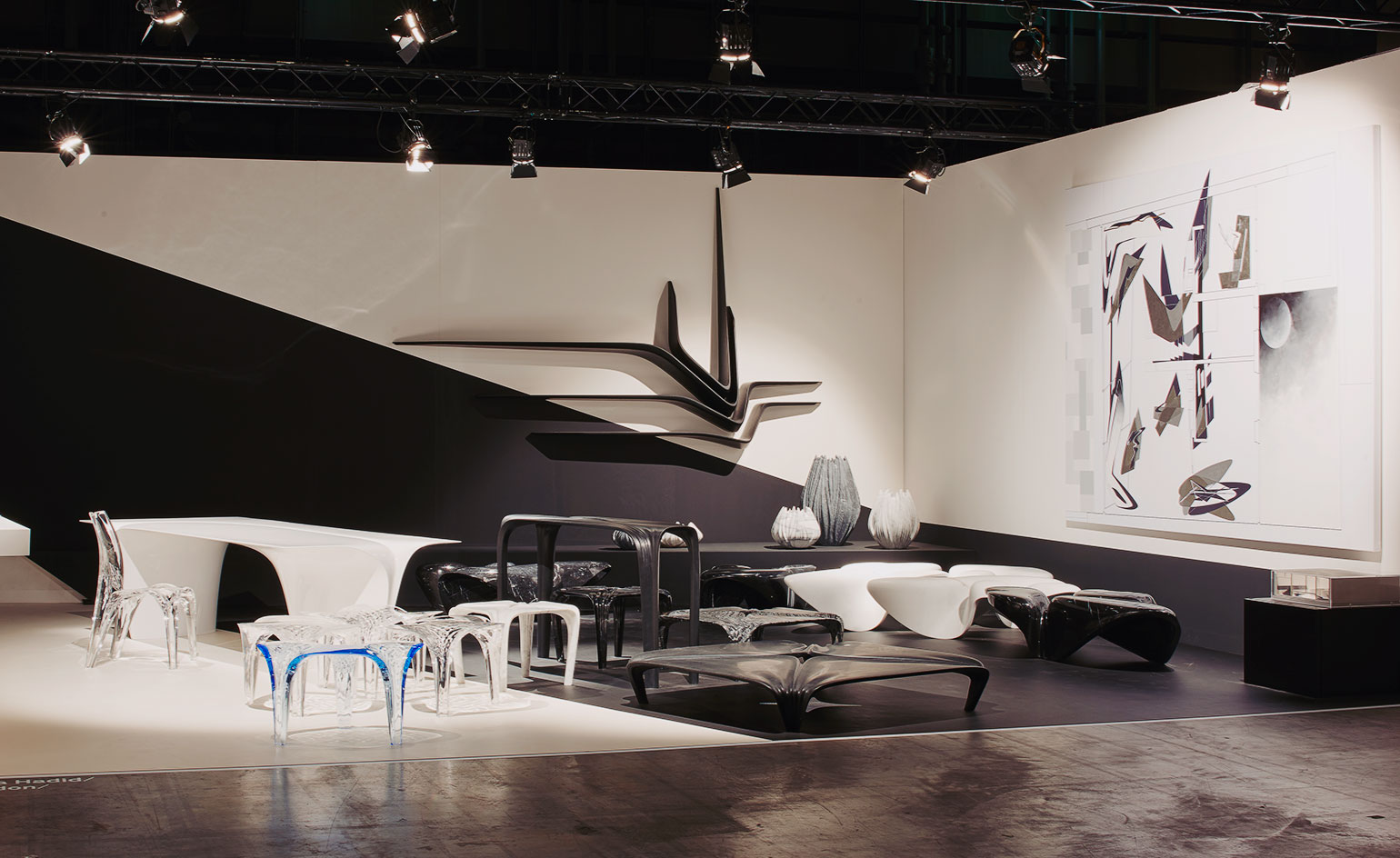 Creativity and commerce: highlights from Design Miami/ Basel
Creativity and commerce: highlights from Design Miami/ Basel -
 Crystal clear: Swarovski’s Designers of the Future unveil dazzling designs in Basel
Crystal clear: Swarovski’s Designers of the Future unveil dazzling designs in Basel